Happy hour: a vibrant clock tower installation tops off Galeria Leme
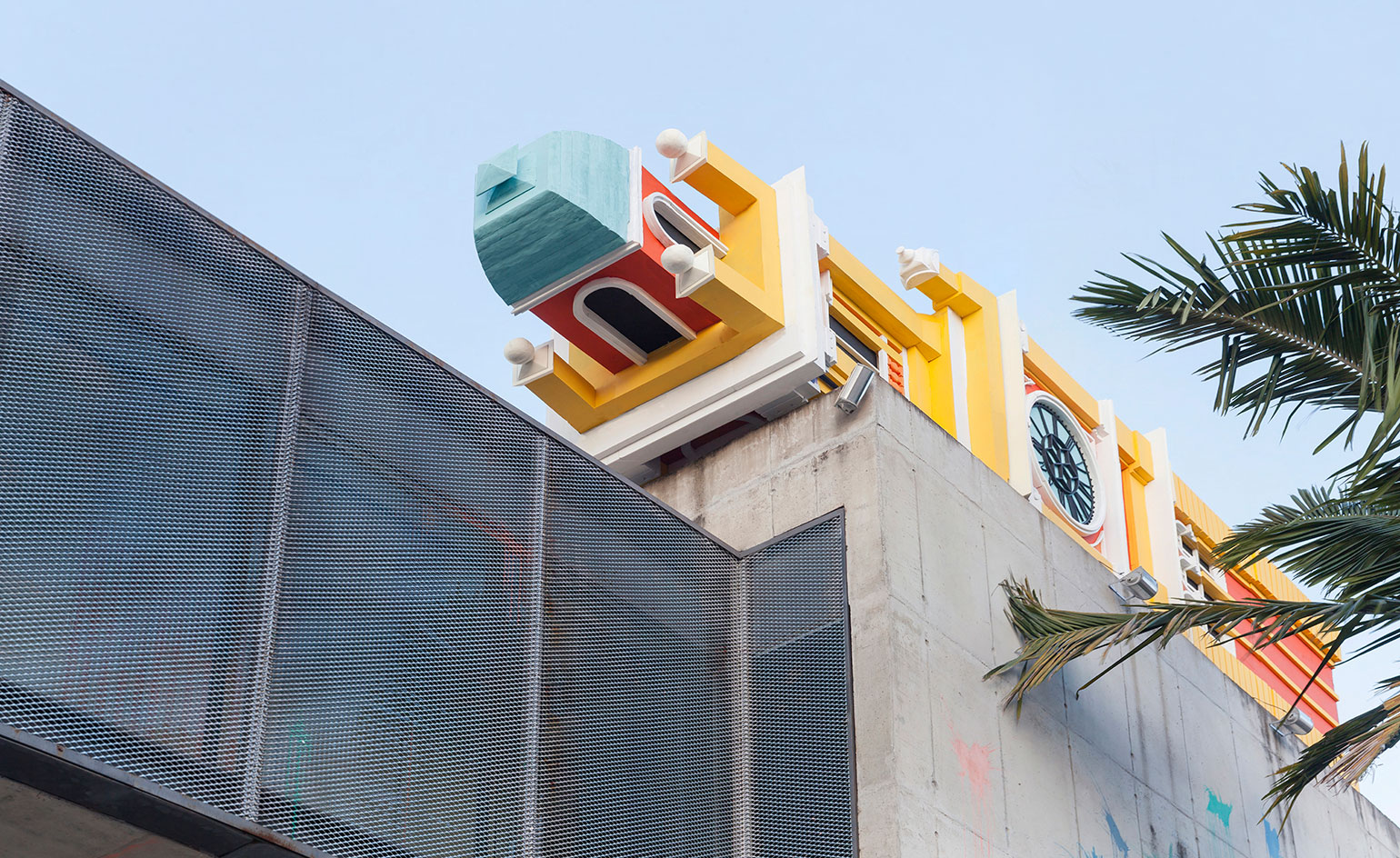
São Paulo’s Galeria Leme, a key player in Brazil’s innovative art scene, has gained a colourful new appendage. As part of the gallery’s ‘SITU’ project – where Latin American artists develop site-specific works on the theme of urban space – artist Pilar Quinteros has constructed a tongue-in-cheek clock tower on the gallery’s roof.
Don’t be tricked by the playful, primary colours of Quinteros’ new installation – this is serious stuff. As curator Bruno de Almeida explains, by laying the ‘subverted’ clocktower sideways, Quinteros is making a philosophical comment on ‘the conquered supremacy of time over space and its consequences on our built environment’.
Designed by the godfather of Brazilian brutalism, Paulo Mendes da Rocha, the grey gallery building is at odds with its vibrant new addition. Despite their aesthetic differences, the two structures share historical parallels. Both, in one way or another, were at one time situated somewhere else.
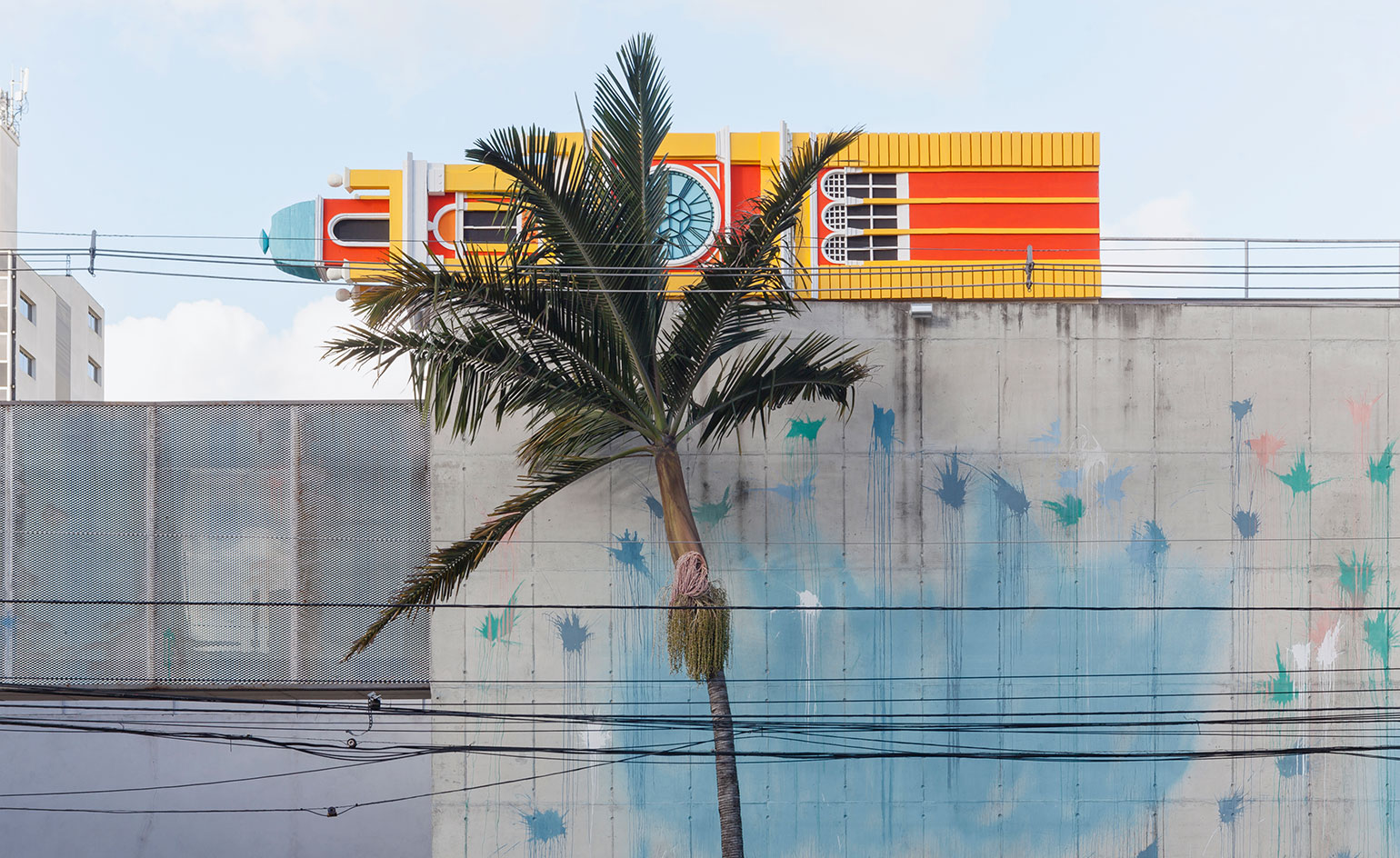
‘Situ 6: Friends of Perpetual Movement’, by Pilar Quinteros.
Quinteros’ installation is a replica of the clock tower at Luz train station – one of São Paulo's most storied buildings. Designed by quintessential Victorian architect Charles Henry Driver at the end of the 19th century in Glasgow, the station was imported to Brazil piece by piece. Galeria Leme has a similarly pre-fabricated past. The original gallery was dismantled in 2011 (just a few short months after it was built) because the plot was bought by a commercial construction company. In 2012, a new, near-identical version (also designed by Mendes da Rocha) was reconstructed down the road.
‘I was very interested in the shared aspects of the history of both buildings,’ Quinteros offers. ‘But at the same time, the longer I spent working on this project the more I got interested in the station’s clock tower as a symbol. The Luz Station is one of the most emblematic buildings in São Paulo but paradoxically it has an European origin. I believe this metaphorically represents the history of our continent.’
Time, too, is a European construct, thinks Quinteros. ‘The clock tower symbolically implements a sort of global order – standard time and the time-zone system also originated in Europe.’ Significantly, Quinteros’ clock doesn’t tick. The 9m long, volumetric rendition of Luz clock tower replaces any intricate internal mechanisms with foam blocks, surrounded by a crude wooden structure and supportive scaffolding – easily dismantled; easily re-installed elsewhere.

The artist explains: ‘The clock tower symbolically implements a sort of global order – standard time and the time-zone system also originated in Europe’
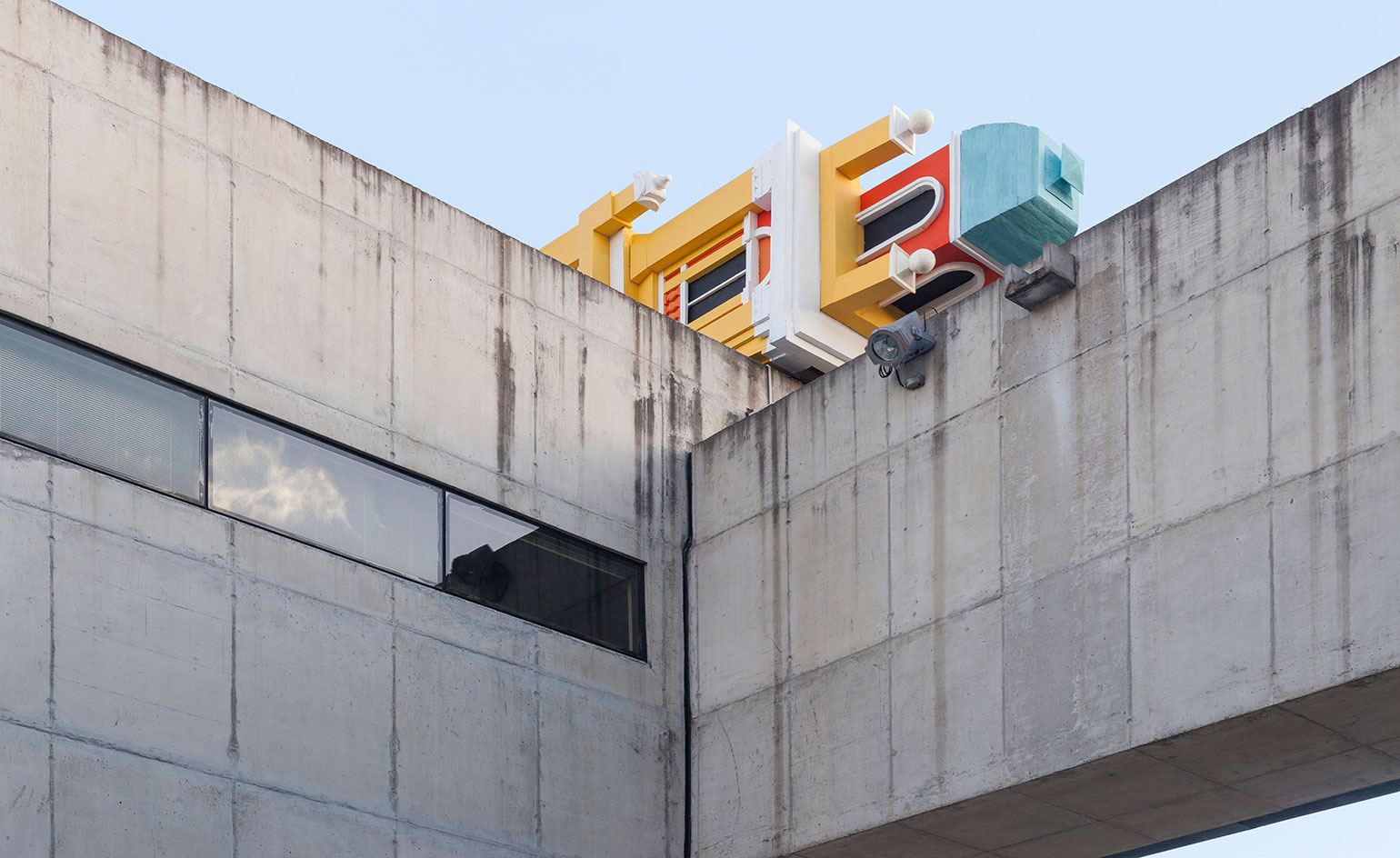
By laying the ‘subverted’ clocktower sideways, Quinteros is making a philosophical comment on ‘the conquered supremacy of time over space’

Designed by the godfather of Brazilian brutalism, Paulo Mendes da Rocha, the grey gallery building is at odds with its vibrant new addition
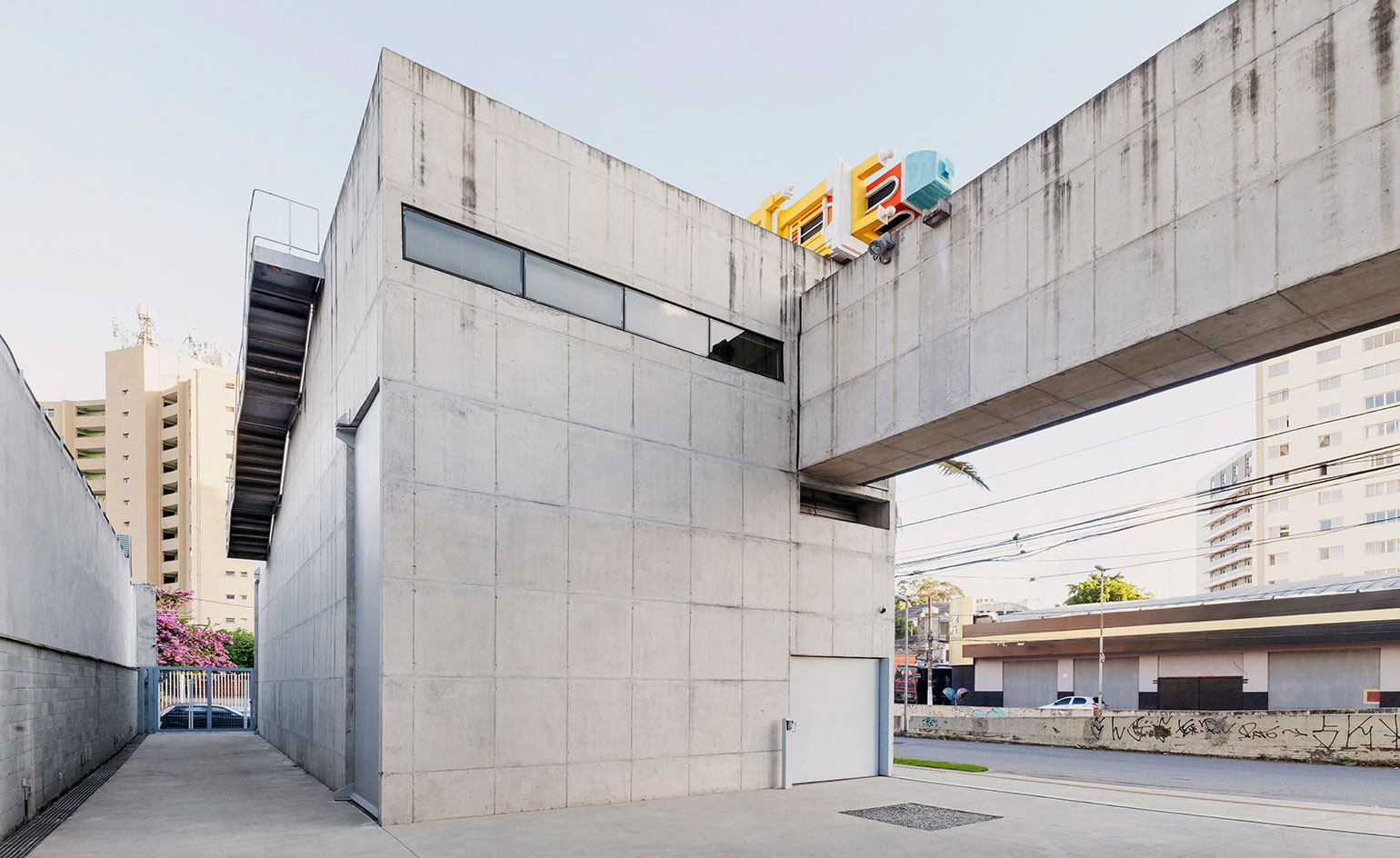
View of the installation from the courtyard

The project is part of the gallery’s ‘SITU’ programme, where Latin American artists develop site-specific works on the theme of urban space
INFORMATION
‘SITU 6: Friends of Perpetual Movement’ is on view until July. For more information, visit the Galeria Leme website
ADDRESS
Galeria Leme
Avenue Valdemar Ferreira 130
Butantã
São Paulo
Wallpaper* Newsletter
Receive our daily digest of inspiration, escapism and design stories from around the world direct to your inbox.
Elly Parsons is the Digital Editor of Wallpaper*, where she oversees Wallpaper.com and its social platforms. She has been with the brand since 2015 in various roles, spending time as digital writer – specialising in art, technology and contemporary culture – and as deputy digital editor. She was shortlisted for a PPA Award in 2017, has written extensively for many publications, and has contributed to three books. She is a guest lecturer in digital journalism at Goldsmiths University, London, where she also holds a masters degree in creative writing. Now, her main areas of expertise include content strategy, audience engagement, and social media.
-
 Tour the best contemporary tea houses around the world
Tour the best contemporary tea houses around the worldCelebrate the world’s most unique tea houses, from Melbourne to Stockholm, with a new book by Wallpaper’s Léa Teuscher
By Léa Teuscher
-
 ‘Humour is foundational’: artist Ella Kruglyanskaya on painting as a ‘highly questionable’ pursuit
‘Humour is foundational’: artist Ella Kruglyanskaya on painting as a ‘highly questionable’ pursuitElla Kruglyanskaya’s exhibition, ‘Shadows’ at Thomas Dane Gallery, is the first in a series of three this year, with openings in Basel and New York to follow
By Hannah Silver
-
 Australian bathhouse ‘About Time’ bridges softness and brutalism
Australian bathhouse ‘About Time’ bridges softness and brutalism‘About Time’, an Australian bathhouse designed by Goss Studio, balances brutalist architecture and the softness of natural patina in a Japanese-inspired wellness hub
By Ellie Stathaki
-
 Inside Jack Whitten’s contribution to American contemporary art
Inside Jack Whitten’s contribution to American contemporary artAs Jack Whitten exhibition ‘Speedchaser’ opens at Hauser & Wirth, London, and before a major retrospective at MoMA opens next year, we explore the American artist's impact
By Finn Blythe
-
 Frieze Sculpture takes over Regent’s Park
Frieze Sculpture takes over Regent’s ParkTwenty-two international artists turn the English gardens into a dream-like landscape and remind us of our inextricable connection to the natural world
By Smilian Cibic
-
 Harlem-born artist Tschabalala Self’s colourful ode to the landscape of her childhood
Harlem-born artist Tschabalala Self’s colourful ode to the landscape of her childhoodTschabalala Self’s new show at Finland's Espoo Museum of Modern Art evokes memories of her upbringing, in vibrant multi-dimensional vignettes
By Millen Brown-Ewens
-
 Wanås Konst sculpture park merges art and nature in Sweden
Wanås Konst sculpture park merges art and nature in SwedenWanås Konst’s latest exhibition, 'The Ocean in the Forest', unites land and sea with watery-inspired art in the park’s woodland setting
By Alice Godwin
-
 Pino Pascali’s brief and brilliant life celebrated at Fondazione Prada
Pino Pascali’s brief and brilliant life celebrated at Fondazione PradaMilan’s Fondazione Prada honours Italian artist Pino Pascali, dedicating four of its expansive main show spaces to an exhibition of his work
By Kasia Maciejowska
-
 John Cage’s ‘now moments’ inspire Lismore Castle Arts’ group show
John Cage’s ‘now moments’ inspire Lismore Castle Arts’ group showLismore Castle Arts’ ‘Each now, is the time, the space’ takes its title from John Cage, and sees four artists embrace the moment through sculpture and found objects
By Amah-Rose Abrams
-
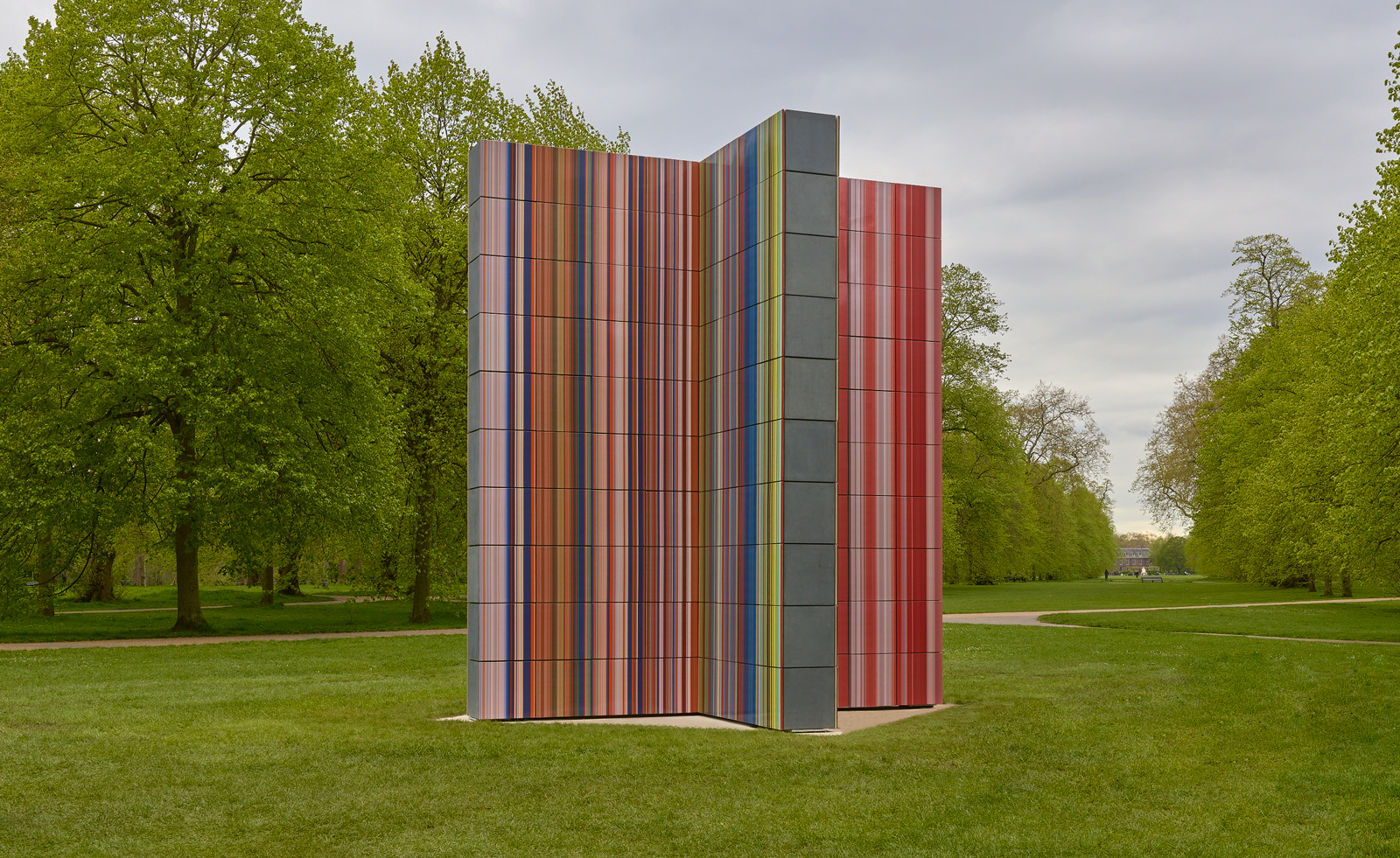 Gerhard Richter unveils new sculpture at Serpentine South
Gerhard Richter unveils new sculpture at Serpentine SouthGerhard Richter revisits themes of pattern and repetition in ‘Strip-Tower’ at London’s Serpentine South
By Hannah Silver
-
 Peter Blake’s sculptures spark joy at Waddington Custot in London
Peter Blake’s sculptures spark joy at Waddington Custot in London‘Peter Blake: Sculpture and Other Matters’, at London's Waddington Custot, spans six decades of the artist's career
By Hannah Silver